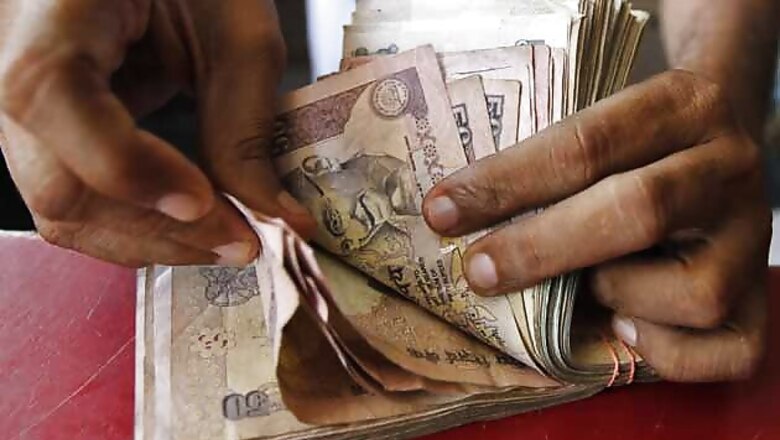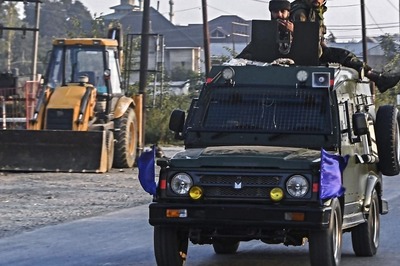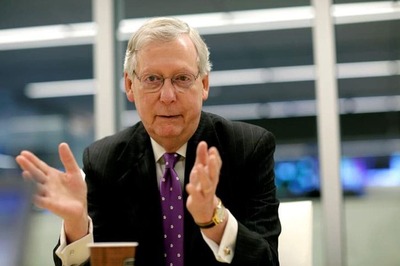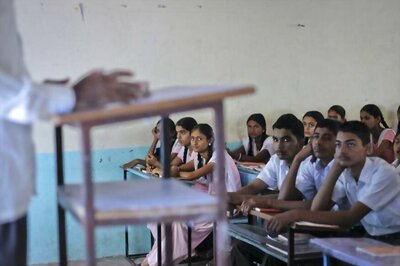
views
Mumbai: The rupee fell to a record low on Tuesday, raising prospects for fresh measures to bolster a currency which has tumbled more than 12 per cent since the start of May, but later pared its losses after the appointment of a new reform-oriented Reserve Bank of India (RBI) governor.
Still, traders say the RBI can only do so much to defend the rupee given the country's record current account deficit, which does not directly respond to monetary policy tools and is the key source of stress behind the currency.
Unless Prime Minister Manmohan Singh's weak coalition government announces substantial reforms, or resorts to raising debt abroad to attract rapid capital inflows, the rupee is likely to fall further, putting further strains on the already sputtering economy, traders said.
India's chief economic adviser Raghuram Rajan, who has been one of the prominent public faces at the finance ministry regarding rupee-related matters, will take the helm for a three-year term after Governor Duvvuri Subbarao's term expires on September 4.
"The government and the reserve bank are working together to address these challenges," Rajan told reporters soon after his appointment was announced.
"We do not have a magic wand to make the problems disappear instantaneously. But I have absolutely no doubt that we will deal with them."
The partially convertible rupee fell to as much as 61.80 to the dollar in early trade, smashing through a previous low of 61.21 hit on July 8, on what traders said was dollar demand from importers.
But dealers said dollar sales by the central bank and the appointment of Rajan helped the rupee recover to 61.37 by afternoon.
"In the last two months, he (Rajan) has been taking a key role on rupee-related steps, and his appointment as the governor will lift expectations of constructive and positive steps to lift the rupee," said Siddharta Sanya, an economist for Barclays in Mumbai.
Possible quick fixes, including raising money from Indians abroad or pushing state-run banks and companies to sell dollar debt, remain potentially expensive in a global environment no longer favouring emerging markets.
In the near-term, a reluctant central bank may have to hold the fort in the rupee's defence, most likely by intensifying its strategy of squeezing rupee liquidity in the money market after measures taken so far have failed to stem the tide.
"I expect direct interventions and further measures which will only work to slow the trend, because reversal requires fundamental reforms that are unlikely to happen," Dariusz Kowalczyk, senior economist and strategist Credit Agricole in Hong Kong, told Reuters.
With a national election due by next May, chances have become more difficult for the government to pass substantial reforms needed to rein in a current account deficit that hit a record 4.8 per cent of gross domestic product last fiscal year.
In the current session of parliament, which opened on Monday, the government hopes to pass some 43 bills and ordinances, including one measure to allow up to 49 per cent foreign investment in the pension sector and another aimed at simplifying the process of buying land for business purposes.
At least India's markets were unmoved by a flare up of violence in Kashmir, where five Indian soldiers were killed in an attack along the disputed border with Pakistan.
DRAINING EFFECT
But, Tuesday's 0.8 per cent fall in the rupee was still the steepest among Asian currencies tracked by Reuters, and it is the weakest performer in the region so far this year.
The record low indicates the Reserve Bank of India's dramatic measures on July 15 to raise short-term interest rates and drain market liquidity have had little impact on the rupee, with cash conditions failing to tighten significantly.
Government spending has surged in the last two weeks, with New Delhi exhausting existing cash balances and resorting to borrowing from the central bank, according to RBI weekly data, adding cash to the market.
Furthermore, the central bank is due to pay its annual dividend to the government, estimated at 330 billion rupees this fiscal year, within the next week or two.
As a result, analysts say the RBI is likely to have to step in again with stronger measures to drain cash.
Among potential steps is a hike in banks' cash reserve ratio, now at a record low 4 per cent - a blunt monetary tool that would force lenders to deposit more cash with the central bank.
The RBI could also take other measures to drain cash, including further reducing the amount of funds that banks can borrow from the RBI, or selling debt.
PAYING THE TOLL
However, each measure to drain cash threatens to extract an economic toll at a time when growth is already at a decade low of 5 per cent.
Benchmark 10-year bond yields have surged about three-quarters of a per centage point since the RBI's steps, threatening to raise borrowing costs across the economy.
CLSA this week became the latest brokerage to cut its growth target this fiscal year, to 5.2 per cent from 5.5 per cent.
Analysts say the government will ultimately need to bring in flows by raising cash abroad, possibly through bank deposits targeted at non-resident Indians or selling a sovereign bond. It won't be cheap.
Bankers and analysts estimate the country will have to pay between 5 per cent and 6 per cent on domestic dollar deposits for a 5-year period if it wants to lure money from Indians overseas.
Meanwhile, borrowing costs for Indian companies and banks have recently surged.
"The (RBI) measures have actually backfired and the central bank is caught in a bind," said Abheek Barua, chief economist at HDFC Bank in New Delhi. "People are also getting a bit tired of no visible action from the government".


















Comments
0 comment